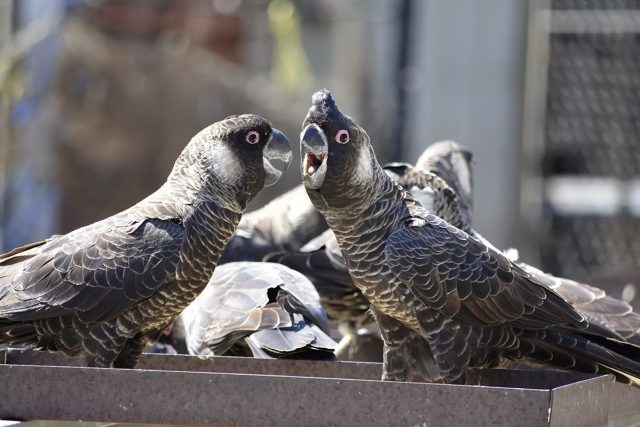I am briefly stepping into the Screen Time role this month to bring you a review of the award-winning documentary film project Black Cockatoo Crisis. Regular readers would be well-aware of the film (and its local star, Wally Kerkhof!), but if you missed the chance to catch a local screening, you can currently view it for free via SBS OnDemand.
Without sounding terribly obnoxious, thanks to this job I have pretty good knowledge of these birds, particularly the Carnaby’s – less so the Forest Red Tailed Black Cockatoo and Baudin’s – but there was still plenty to learn! The plight of this trio of endangered endemic birds, is told through the viewpoint of scientists, volunteer groups, farmers, and passionate community members, stitched together beautifully by director/producer Jane Hammond.
For me, what this documentary illustrated so clearly is the scale of the decline – I knew numbers weren’t great, but I also didn’t know what the starting point was. To see that visually represented caused a sharp intake of breath! I was also surprised to learn that I had once lived near another Carnaby’s hot spot, the Cocanarup Timber Reserve in Ravensthorpe. Unfortunately, I was living the pretty self-centred life of a 20-year-old at the time, and in an era with far less access to information, so this completely passed me by. The Cocanarup reserve, and closer to home Julimar, are both under threat from mining proposals.
There is a lot of sweeping drone footage of familiar scenery for WA viewers — the South West forests, salmon gums of Moora, right down to the pine plantations of Pinjar, Gnangara and Yanchep. One of the ways in which the cockatoos have adapted to the loss of their native banksia woodlands is to use the pines for feeding and roosting. These have been routinely cleared, with the last 1800 hectares saved from logging at the end of 2023 — but with no plans to replace the thousands of trees already gone.
In a stark contrast to what is made clear is an urgent issue (without further action, extinction within two decades is likely), the information is presented calmly. There’s no hysteria from the experts – just an eloquent explanation of cause and effect, problems and solutions, with the camera lingering on the subjects perhaps just a beat longer than what they are comfortable with. This pause is when the tears welled up, or a heavy sigh was breathed, revealing the enormous emotional investment of trying to save these cockatoos, against seemingly insurmountable odds.
It is something that has been on my mind lately — why, as individuals, do we constantly have to fight for corporations and the government to do the right thing? When there are competing objectives, it is rarely conservation that wins, not when there’s money to be made. There are some simple solutions in Black Cockatoo Crisis that just aren’t being adhered to. Rather than shooting Baudin’s when they nibble on their apples and pears, orchardists can net their fruit. Grain trucks can seal their trailers, preventing the spillage that lures cockatoos to the roadside and ultimately their death. And our government should just say ‘no’ to any development that further threatens the habitat of these supposedly protected species. Before they are all standing around in 2044 wringing their hands and saying, “If only we’d known…”
Though there is no denying a sense of melancholy when viewing, Black Cockatoo Crisis does have some suggested calls-to-action that you can enact to help the cause. These include:
• Write, phone, or visit your local MP and ask them to take real and urgent action to save the black cockatoos. Member for Durack Melissa Price can be contacted at melissa.price@mp.liberal.org.au.
• Plant a native tree, shrub or nut tree in your garden and join the movement to rewild, restore and replant our regions.
• Follow and/or donate to the following organisations:
o @BlackCockatooCrisis
o @WAForestAlliance
o @CarnabysCrusader
o @MooreCatchmentCouncil
o @BigCarnaby’sSculpture








